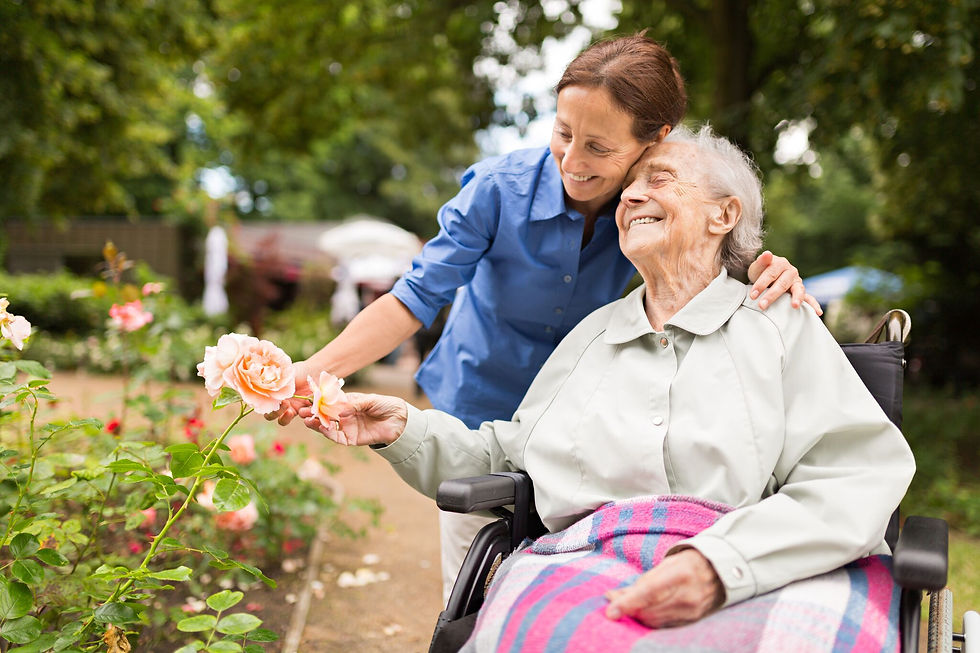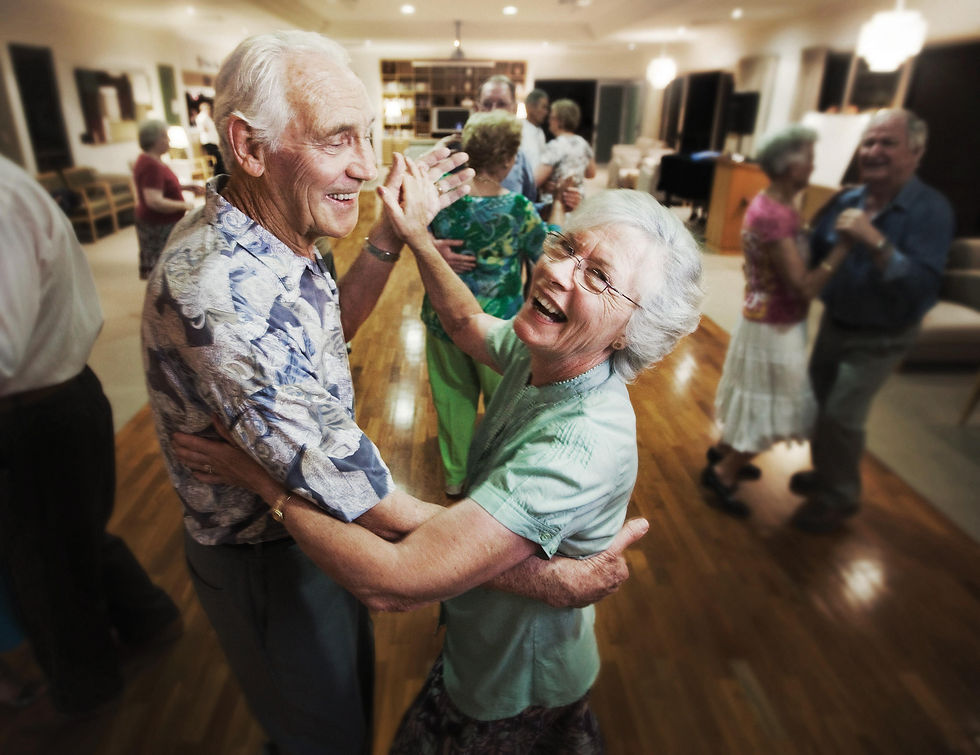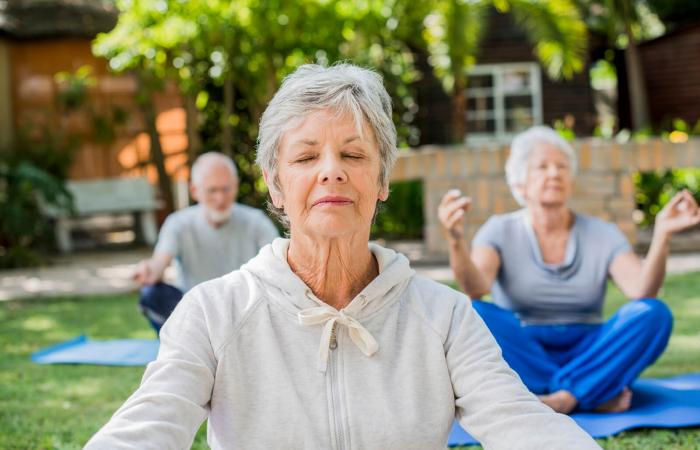Activities for Memory Care Facilities
- Julia Doo
- May 7, 2020
- 4 min read

(Huffpost: Stop Infantilizing Old People, Please)
The ideal Memory Care Facility targets the preservation of physical, emotional, and cognitive health and offers a wide range of opportunities for people of many backgrounds, interests, cognitive abilities, and stages of memory loss. Similar to a college-like environment, residents should feel as if they are busy and always have somewhere to go and more to experience and learn, but without the stress and obligation.
Gardening
Offer access to, assistance, and instruction as needed to garden. Gardening is an activity that requires the exercise of attention and performing multi-step process tasks, that can encourage the practice of fine and gross motor skills, and can be a social activity. Gardening provides a feeling of purpose, achievement, and pride. Gardening therapy has been shown to be effective in reduction of blood pressure in elderly (Lewis, & Mattson, 1988) and "reduction of pain, improvement in attention, lessening of stress, modulation of agitation, lowering of as needed medications, antipsychotics and reduction of falls" in elderly living in long-term assisted living facilities (Detweiler, Sharma, Detweiler, Murphy, Lane, Carman, Carman, Chudhary, Halling, & Kim, 2012). Both depressed and nondepressed elderly long-term care residents experience positive emotional effects from visiting gardens (Rappe & Kivelä, 2005). Soil microbes, such as Mycobacterium vaccae, cause an immune response that is associated with the activation of the mesolimbocortical serotonergic systems, which may point to antidepressant properties (Lowry, Hollis, De Vries, Pan, Brunet, Hunt, Paton, van Kampen, Knight, Evans, & Rook, 2007).

(Life Care Services)
TimeSlips
The TimeSlips activity, as described in Forget Memory: Creating Better Lives for People with Dementia by Basting, A. D., is an exercise involves looking at an image with a group and creating a story about the image from spontaneous creativity. Such an activity was able to encourage many more reserved residents to become active in the group and inspire creativity and humor (Basting, 2009, p.94-103). This exercises attention, language, and creativity, and social provides a social environment and a climate of positivity.

(Milwaukee Wisconsin - Journal Sentinel: Emphasis on arts, creativity revolutionizing senior care)
To Whom I May Concern
In Forget Memory: Creating Better Lives for People with Dementia by Basting, A. D., dementia patients write letters titled "To Whom I May Concern" to talk about their experiences with dementia and how the people around them have reacted (Basting, 2009, p.87-93). I would like to offer a variation of this activity, in which residents can vent about their experiences, thank those who have helped them, and ask for help and guidance. They can choose to read their letters allowed, have them mailed to others, or just to write them.

(ToWhomIMayConcern)
Dancing
Dancing provides social and physical exercise, as well as an emotionally engaging activity for residents. Dancing was proved to be engaging for residents in long-term dementia care facilities (Guzmán‐García, Hughes, James, & Rochester, 2013). However, this could open residents to potential injury, so supervisors will remain nearby.

(Activities-For-Seniors: Senior Couple Dancing Ballroom)
Art Events, Classes, and Activities
These can include many types of art, such as painting, drawing, and sculpting for those who cannot hold a pen and brush. Art provides a feeling of purpose, achievement, and pride with their work and exercises fine and gross motor skills. Art therapy has been shown to benefit those with dementia by allowing them to express themselves, enriching their experience in long-term care facilities with colors and art, and providing a social environment (Stewart, 2004).

(Bellmont Village)
Meditation
Meditation and mindfulness offers stress relief and the ability to calmly understand situations that may be painful and difficult, such as recognition of cognitive decline and other stresses that come with it. In three randomized controlled trials examining the relationship between mindfulness, meditation, and cognitive decline and such diagnoses, it was found that the practice of meditation and mindfulness was associated with "reduction of cognitive decline, reduction in perceived stress, increase in quality of life, [and] increases in functional connectivity, percent volume brain change and cerebral blood flow in areas of the cortex" (Russell-Williams, Jaroudi, Perich, Hoscheidt, El Haj, & Moustafa, 2018).

(LoveToKnow: Cognitive Activities For Elderly)
These are only a few of the many activities that memory care facilities may provide to take care of the cognitive, physical, and emotional help of their residents. Research on the benefits of different activities is skyrocketing and will continue to grow as the baby boomer generation ages and the population of elderly increases.
Watch the To Whom I May Concern® Promo: https://vimeo.com/291016153
Sources:
Basting, A. D. (2009). Forget memory: Creating better lives for people with dementia. JHU Press, 87-103.
Detweiler, M. B., Sharma, T., Detweiler, J. G., Murphy, P. F., Lane, S., Carman, J., Carman, J., Chudhary, A. S., Halling, M. H. & Kim, K. Y. (2012). What is the evidence to support the use of therapeutic gardens for the elderly?. Psychiatry investigation, 9(2), 100.
Guzmán‐García, A. H. J. C., Hughes, J. C., James, I. A., & Rochester, L. (2013). Dancing as a psychosocial intervention in care homes: a systematic review of the literature. International Journal of Geriatric Psychiatry, 28(9), 914-924.
Lewis, J. F., & Mattson, R. H. (1988). Gardening may reduce blood pressure of elderly people: activity suggestions and models for intervention. Journal of Therapeutic Horticulture, 25-37.
Lowry, C. A., Hollis, J. H., De Vries, A., Pan, B., Brunet, L. R., Hunt, J. R., Paton, J. F., van Kampen, E., Knight, D. M., Evans, A. K. & Rook, G. A. (2007). Identification of an immune-responsive mesolimbocortical serotonergic system: potential role in regulation of emotional behavior. Neuroscience, 146(2), 756-772.
Rappe, E., & Kivelä, S. L. (2005). Effects of garden visits on long-term care residents as related to depression. HortTechnology, 15(2), 298-303.
Russell-Williams, J., Jaroudi, W., Perich, T., Hoscheidt, S., El Haj, M., & Moustafa, A. A. (2018). Mindfulness and meditation: treating cognitive impairment and reducing stress in dementia. Reviews in the Neurosciences, 29(7), 791-804.
Stewart, E. G. (2004). Art therapy and neuroscience blend: Working with patients who have dementia. Art therapy, 21(3), 148-155.
Images:




Comments